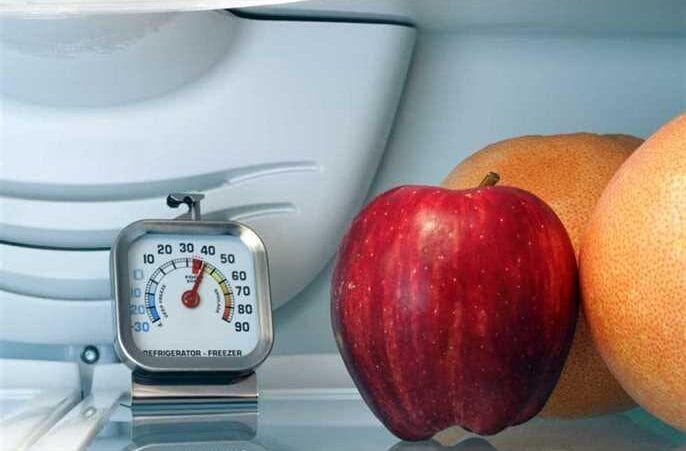It can be pretty disappointing to plan a gourmet dinner, only to find that your chicken breasts froze on the top shelf of your fridge. Or, they’re so warm that you worry they aren’t safe to eat at all. Suddenly, you’re reaching for your phone and dialing a restaurant for takeout.
But let’s get back to our initial question: what temperature should you set your fridge at?
According to the FDA, you should keep the refrigerator at 4°C (or 40°F) or slightly colder. Lower temperatures restrict the growth of bacteria, which prevent you from getting food poisoning. Be sure to check your thermostat every so often to make sure your fridge is at the right temperature. It’s best to err on the side of being too cold rather than too warm.
The Dangers of Improper Food Storage
It may not seem like a big deal to keep your fridge above the recommended temperature. But it can result in a sickness that will make you wish you’d paid closer attention to the thermostat. A fridge that isn’t cold enough can promote the growth of bacteria like:
- E. coli
- C. botulinum
- Salmonella
Ingesting food with these bacteria in it can make you seriously ill. Even if the food doesn’t taste like it’s gone bad, that doesn’t mean it’s safe.
It can be frustrating to throw out a delicious meal just because it wasn’t stored properly. However, if you’ve ever had food poisoning, you know that eating improper food won’t be worth it.
Not all fridges have a thermostat installed—some simply have a sliding dial from 1-5. Purchase a thermostat so that you know for certain whether your food is being stored safely. You may also want to check what the temperatures are for different areas of the fridge (on the top shelf, on the door, or at the back).
Don’t Leave Food on the Counter for Too Long
You know that putting hot food in the fridge is dangerous; it increases the temperature of the appliance, which increases the risk that bacteria will grow. To avoid this, you leave food on the counter until it cools, then move it to the fridge.
However, allowing the food to cool completely will also put you at risk. If food reaches room temperature, it gives bacteria time to thrive. The maximum amount of time that you should leave food out is 2 hours.
Side note: when you’re marinating meat, keep it in the fridge! And even though it might seem wasteful, throw out the leftover marinade juice (unless you plan to boil it or cook it at a high temperature).
Avoid Overcrowding Your Fridge
If every shelf is stuffed with groceries, air won’t be able to circulate in your refrigerator. That means food won’t reach the right temperature, even if the thermostat is working properly. Try to leave a bit of space between each item on your shelves, which will promote better airflow.
Is Your Fridge Acting Funny?
What if you change the temperature of your fridge, but your groceries are still too warm or cold? You suspect that your thermostat is deceiving you. In that case, you’ll require fridge maintenance in Winnipeg.
Call Mike’s Quality Appliance Repair, and we’ll get your fridge back on track in no time.

